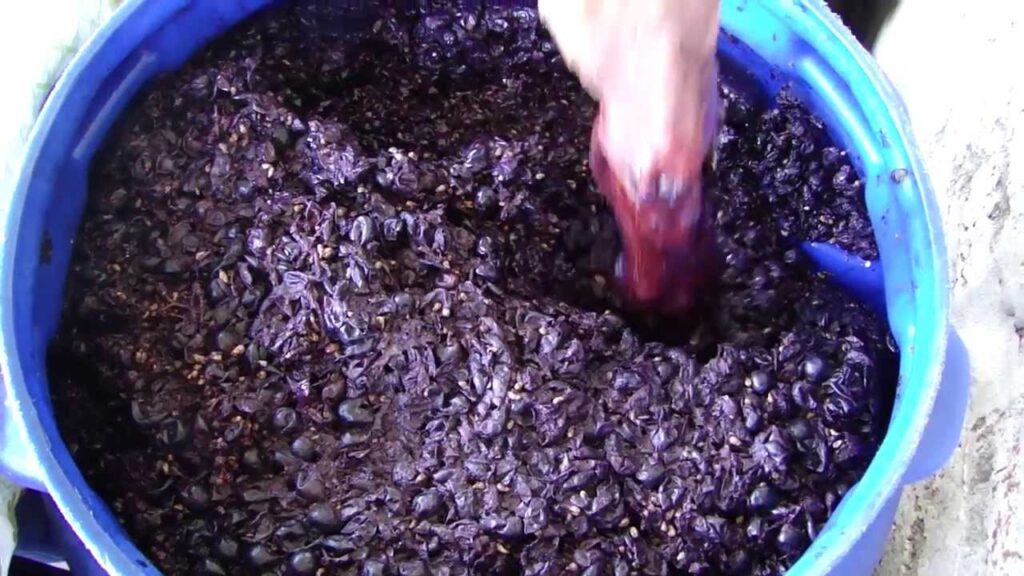do you want to know how to make grape wine? Grape wine is a fascinating beverage, which over time has managed to seduce thousands of young and adult palates that find in it a perfect companion. But, do we know how to make homemade grape wine? we can all make our own wine, following a few steps we can make a drink that can easily become our perfect companion for every day.
Wine does not go out of fashion, and although in recent years it has managed to obtain a greater boom, it has always been there present at the table of many people, that is why, its homemade elaboration has aroused the curiosity of many who feel passion for it. Learning the steps to know how to make grape wine can become a challenge for those who seek to create their own recipes, flavors, aromas and thus manage to surprise everyone who considers himself a lover of this wine of ancient origin.
En esta nota, encontraras lo siguiente
how to make grape wine? (step by step)
If you want to begin to venture into the world of making handcrafted liqueurs, making homemade grape wine can be a perfect option that will turn your grape vines into a drink with a unique seal. Besides, knowing how to make homemade grape wine can become a lucrative and simple family business, since you do not need many implements to process the selected grapevine. However, it is necessary to follow step by step its elaboration in order to obtain a quality wine that will ensure its success among those who taste it. 
Steps to make homemade grape wine
Making homemade grape wine can be a very pleasant job, as well as a venture that can lead us into the wonderful world of handcrafted beverages, but in order to do it we must follow certain steps, which we will see below:
1.- Implements
To achieve an optimal homemade grape wine, it is necessary to have some implements that will ensure an easy execution at the time of elaboration, these implements are:
- Wooden containers, jars or large plastic containers with airtight lids
- PH measuring tape
- Cotton cloth to filter the must
- Funnel and previously sterilized bottles
- Knife
- Spoons
- Mixing paddles
- Gauze
2.- Choice of grapes
Then you must choose the best red or white grapes for the making of homemade wine, these can be the ones you like the most within the wide range that exists such as. Bonarda. Cabernet, Tempranillo, Syrah, Merlot, Pinot Noir, Garnacha, among others. These selected grapes must be completely healthy, that is to say, free of any bacteria, bruises and must be kept at a temperature between 19 and 20°C. If we wish to prepare a liter of homemade grape wine, we will need approximately 2 kilos of vines.
3.- Crushing
In order to obtain the must, it is necessary to crush the grapes, an initial and fundamental part of our homemade wine. To do this, we carefully crush the selected grapes, removing them from the stems and stalks. We can use our hands using rubber gloves or a wooden crusher, which must be well gripped with the hands and pressed hard, but at the same time carefully so as not to spill the juice that is being created.
4.- Fermentation
Fermentation is a very important step, so once the processed grapes are obtained, they are covered with a gauze folded in 4 or 5 layers, this will allow good air penetration, necessary to activate the fermentation process and will prevent the access of insects to the container destined to start the fermentation process.  It is then necessary to transfer the container to a place with a temperature of 18°C and cover it with a clean cloth, which will prevent sunlight from entering the must or any unwanted substance and allow optimal conditions to start the fermentation process.
It is then necessary to transfer the container to a place with a temperature of 18°C and cover it with a clean cloth, which will prevent sunlight from entering the must or any unwanted substance and allow optimal conditions to start the fermentation process.
5.- Addition of yeasts
Grapes have their own yeasts, but the addition of other yeasts will contribute to a better fermentation and to obtaining a better juice. For this purpose, sulfur salts such as potassium metabisulfite are added.
The addition of this salt in a proportion of 100 mg/liter will help in the prevention of future alterations of the must, so a small amount is added in a little dissolved must and then added back to the container.
The container with the contents should remain between 2 and 3 days in these conditions for the wort to begin to become covered with foam. Once the time has elapsed, the juice should be drained and the pulp squeezed out, for which you can use the same gauze or a normal strainer, discarding the remaining pulp in the process. The resulting juice is then poured into a glass container up to 75%, which will prevent the contents from spilling.
6.- Clarification and Filtering
At the end of the fermentation phase, the liquid is separated from the solids present, and filtering is carried out using clarifying agents that drag the solid remains to the bottom of the container. In order to achieve a good filtration, it can be left to act for two or three days at cold temperatures of at least 7°C.
The wine is then filtered at least three times using a coarse filter and then a fine filter and the contents are transferred to another container.
7.- Maceration
To macerate the wine juice obtained, we will leave the container closed in a cool place for at least three days, which will allow the contents to macerate properly, obtaining a much more potent broth.
8.- Bottling
Once the time of maceration of our wine has elapsed, we proceed to bottling, the container destined for it will have to be previously sterilized and a funnel with filter will be used that justly will filter again the content avoiding any solid that is left behind.
This process is very simple and is the final point of the whole process, so it should be done in a subtle way. When finished, it is left in a cool place out of the reach of sunlight and can be stored for as long as we deem convenient or it can be tasted at once. The process of making grape wine at home can be very easy and rewarding, you just need to have the necessary utensils at hand to start the elaboration and production phases and follow the corresponding steps to succeed in the attempt.




